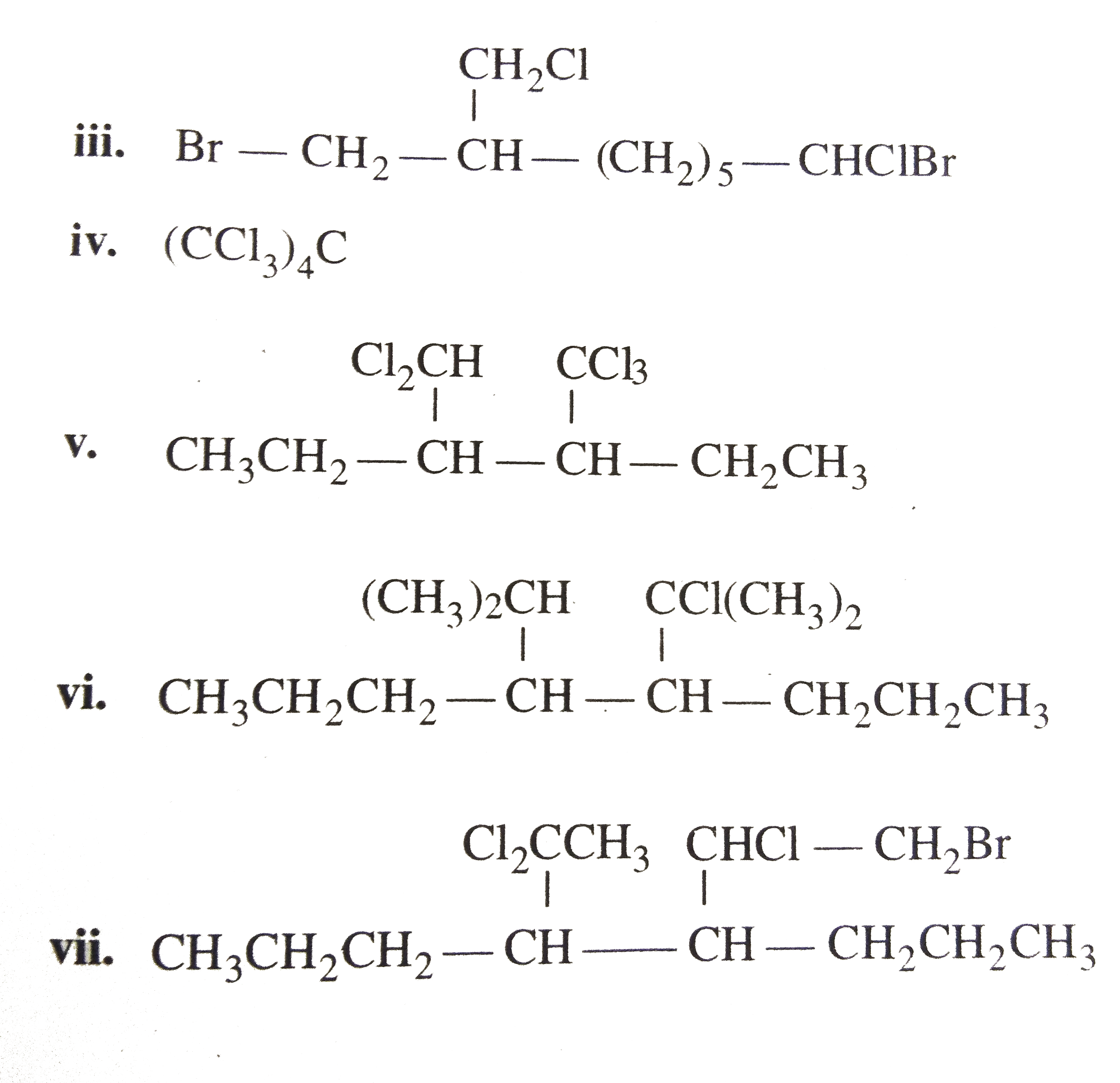H3C−CH2−C∣BrH−CH3NaNH2−−−−→
Which are correct statement?
1-butene is Hofman product
2-butene is saytzeff product
both are correct
none is correct
The correct Answer is:C
To solve the problem regarding the reaction of 2-bromobutane with sodium amide (NaNH2), we will analyze the reaction step by step.
1. Identify the Reactant:
The given compound is 2-bromobutane, which can be represented as:
CH3−CH2−C(Br)−CH3
2. Understand the Reagent:
Sodium amide (NaNH2) is a strong base. It can deprotonate hydrogen atoms from the adjacent carbon atoms (alpha hydrogens) to the carbon bearing the bromine atom.
3. Possible Deprotonation:
The base (NaNH2) can abstract a proton from either of the two adjacent carbon atoms (the one on the left or the one on the right of the carbon attached to Br):
- If it abstracts a proton from the left carbon (CH2), the double bond will form between the left carbon and the carbon with Br, leading to the formation of 1-butene.
- If it abstracts a proton from the right carbon (CH3), the double bond will form between the carbon with Br and the right carbon, leading to the formation of 2-butene.
4. Determine the Products:
- Hofmann Product: This is the less substituted alkene, which in this case is 1-butene (formed by deprotonating the left carbon).
- Saytzeff Product (Zaitsev's Rule): This is the more substituted alkene, which is 2-butene (formed by deprotonating the right carbon).
5. Conclusion:
- The reaction produces both 1-butene (Hofmann product) and 2-butene (Saytzeff product).
- Therefore, the correct statements regarding the products of the reaction are:
- 1-butene is a Hofmann product.
- 2-butene is a Saytzeff product.
- Both statements are correct.
Final Answer:
- The correct options are:
1. 1-butene is a Hofmann product.
2. 2-butene is a Saytzeff product.
3. Both are correct.
The given compound is 2-bromobutane, which can be represented as:
CH3−CH2−C(Br)−CH3
Sodium amide (NaNH2) is a strong base. It can deprotonate hydrogen atoms from the adjacent carbon atoms (alpha hydrogens) to the carbon bearing the bromine atom.
The base (NaNH2) can abstract a proton from either of the two adjacent carbon atoms (the one on the left or the one on the right of the carbon attached to Br):
- If it abstracts a proton from the left carbon (CH2), the double bond will form between the left carbon and the carbon with Br, leading to the formation of 1-butene.
- If it abstracts a proton from the right carbon (CH3), the double bond will form between the carbon with Br and the right carbon, leading to the formation of 2-butene.
- Hofmann Product: This is the less substituted alkene, which in this case is 1-butene (formed by deprotonating the left carbon).
- Saytzeff Product (Zaitsev's Rule): This is the more substituted alkene, which is 2-butene (formed by deprotonating the right carbon).
- The reaction produces both 1-butene (Hofmann product) and 2-butene (Saytzeff product).
- Therefore, the correct statements regarding the products of the reaction are:
- 1-butene is a Hofmann product.
- 2-butene is a Saytzeff product.
- Both statements are correct.
- The correct options are:
1. 1-butene is a Hofmann product.
2. 2-butene is a Saytzeff product.
3. Both are correct.
Topper's Solved these Questions
- BOOK - FIITJEECHAPTER - GENERAL ORGANIC CHEMISTRYEXERCISE - MORE THAN ONE CORRECT CHOICES24videos
GENERAL ORGANIC CHEMISTRY
- BOOK - FIITJEECHAPTER - GENERAL ORGANIC CHEMISTRYEXERCISE - COMPREHENSION TYPE18videos
GENERAL ORGANIC CHEMISTRY
- BOOK - FIITJEECHAPTER - GENERAL ORGANIC CHEMISTRYEXERCISE - Section (I) [Jee mains]: With Single Correct Choice100videos
GENERAL ORGANIC CHEMISTRY
- BOOK - FIITJEECHAPTER - GASEOUS STATEEXERCISE - MATCHING LIST TYPE QUESTION1videos
GASEOUS STATE
- BOOK - FIITJEECHAPTER - HYDROCARBONSEXERCISE - SINGLE INTEGER ANSWER TYPE QUESTION9videos
HYDROCARBONS
Similar Questions
In the given compounds
(A) CH3CH2CH2CH2−Br
(B) CH3−CH2−C∣BrH−CH3
(C) CH3−CH3∣C∣Br−CH3
The correct order of boiling point isView SolutionWhich alkyl halide from the following pairs would you expect to react more rapidly by an SN2 mechanism? Explain your answer.
(i)CH3CH2CH2CH2BrorCH3CH2C∣BrHCH3,(ii)CH3CH2C∣BrHCH3orH3C−CH3∣C∣CH3−Br
(iii)CH3C∣CH3HCH2CH2BrorCH3CH2C∣CH3HCH2BrView Solution
Knowledge Check
- Question 1 - Select One
CH3−C∣Br=CH(2)HBr−−→
Which of the following statements is correct for this reaction?AIt is an electrophilic additionBIt follow Markovnikov rule.CFirst H⊕ attacks on vinyl bromide followed by BrΘ and prodcuts CH3−CBr2−CH3DAll of these - Question 2 - Select One
The IUPAC name of the compound
H3C−CH2−C∣∣CH2−CH2−OH∣C∣NH2−CH3 isA2-Amino- 4- ethyl -2 - hydroxypent - 4 - eneB2-Amino - 4 - ethylpent - 4 - en - 2 - olC4-Ethyl - 2 - hydroxypent - 4 -en - 2 - amineD2-Amino - 4 - methylhexan - 2 -ol - Question 3 - Select One
What is the correct about the following reaction
CH3−C∣BrH2−CH−CH3Mg−−−−−−→(C2H5)2O(i)CO2−−−−−−→(ii)H3O+AThe major product is recemic mixture of 2- methyl butanoic acidBThe major product is achiral 2-methyl butanoic acidCIf a pure enantiomer of starting compound is taken, the major product would be a pure enaniomer of 2-methyl butanoic acidDThe major product would be trans-2-butene
Which alkyl halide from the following pairs would you expect to react more rapidly by SN2 mechanism ? Explain your answer.
CH3CH2CH2CH2 or CH3CH2−C∣BrH−CH3
(ii) CH3CH2C∣BrHCH3 or H3C−CH3∣C∣CH3−Br
(iii) CH3C∣CH3HCH2CH2Br or CH3CH2C∣CH3HCH2BrView SolutionWhich alkyl halide from the following pairs would you expect to react more rapidly by an SN2 mechanism? Explain your answer.
(i) CH3CH2CH2CH2Br or CH3CH2C∣BrHCH3 (ii) CH3CH2C∣BrHCH3 or H3C−CH3∣C∣CH3−Br
View SolutionWhich alkyl halide from the following pairs would you expect to react more rapidly by an SN2 mechanism? Explain your answer.
(i) CH3CH2CH2CH2Br or CH3CH2C∣BrHCH3 (ii) CH3CH2C∣BrHCH3 or H2C−CH3∣C∣CH3−Br
View SolutionCH3−C∣ClH−C∣IH−CH3
CH3−C∣CH3H−(CH2)4−C∣CH3H−C∣BrH−CH2CH3

 View Solution
View SolutionCH3−CH3∣C∣Br−CH3(A)+(B)⎛⎜ ⎜ ⎜ ⎜⎝CH3−CH2−Br∣CH−CH3⎞⎟ ⎟ ⎟ ⎟⎠
CH3−CH3∣CH−CH3Br2−−→ the percentage yield of 'A' is (The relative reactivities of 1∘,2∘,3∘− hydrogens 1:3.8:5)View Solution

